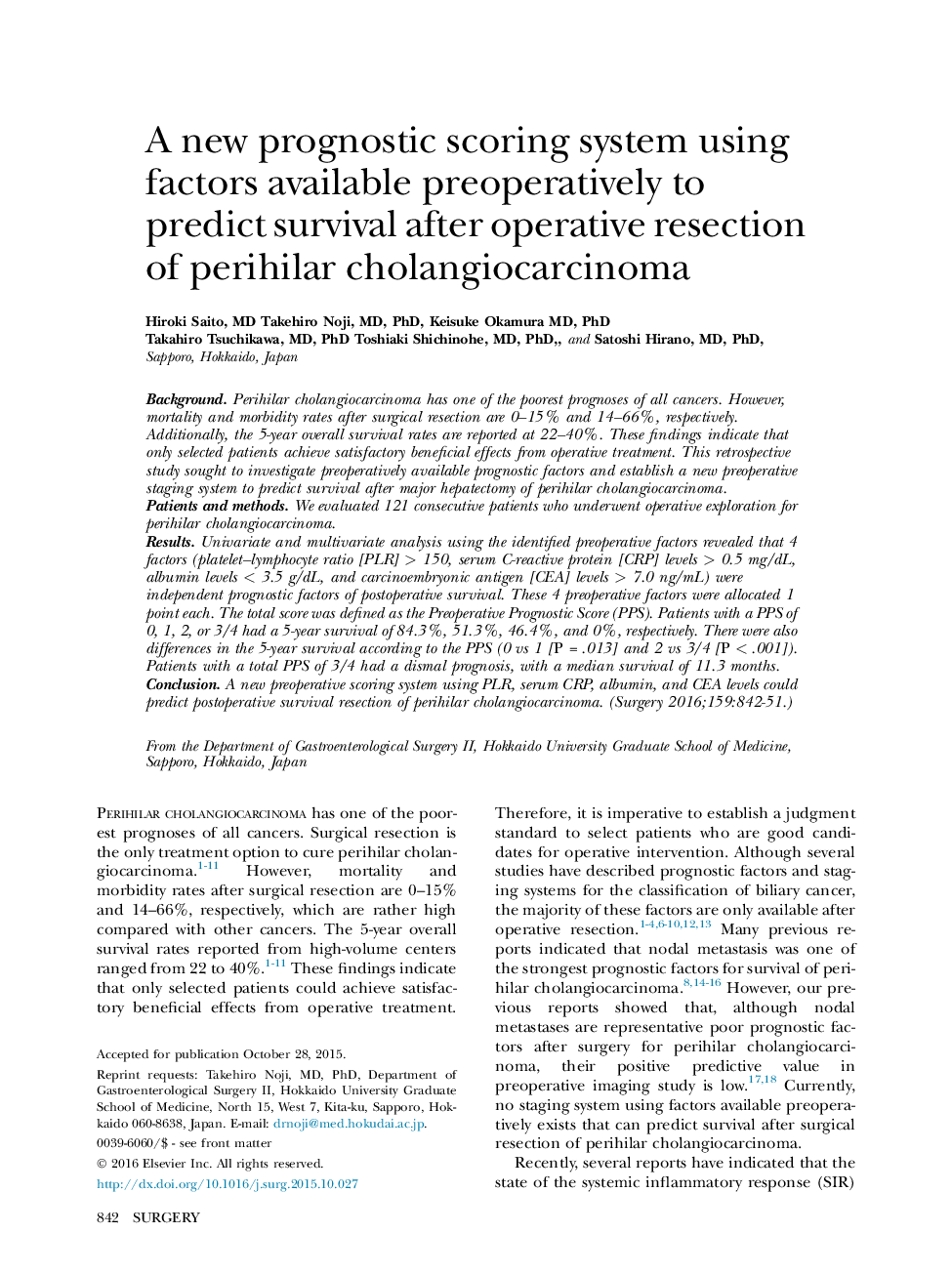| Article ID | Journal | Published Year | Pages | File Type |
|---|---|---|---|---|
| 4306815 | Surgery | 2016 | 10 Pages |
BackgroundPerihilar cholangiocarcinoma has one of the poorest prognoses of all cancers. However, mortality and morbidity rates after surgical resection are 0–15% and 14–66%, respectively. Additionally, the 5-year overall survival rates are reported at 22–40%. These findings indicate that only selected patients achieve satisfactory beneficial effects from operative treatment. This retrospective study sought to investigate preoperatively available prognostic factors and establish a new preoperative staging system to predict survival after major hepatectomy of perihilar cholangiocarcinoma.Patients and methodsWe evaluated 121 consecutive patients who underwent operative exploration for perihilar cholangiocarcinoma.ResultsUnivariate and multivariate analysis using the identified preoperative factors revealed that 4 factors (platelet–lymphocyte ratio [PLR] > 150, serum C-reactive protein [CRP] levels > 0.5 mg/dL, albumin levels < 3.5 g/dL, and carcinoembryonic antigen [CEA] levels > 7.0 ng/mL) were independent prognostic factors of postoperative survival. These 4 preoperative factors were allocated 1 point each. The total score was defined as the Preoperative Prognostic Score (PPS). Patients with a PPS of 0, 1, 2, or 3/4 had a 5-year survival of 84.3%, 51.3%, 46.4%, and 0%, respectively. There were also differences in the 5-year survival according to the PPS (0 vs 1 [P = .013] and 2 vs 3/4 [P < .001]). Patients with a total PPS of 3/4 had a dismal prognosis, with a median survival of 11.3 months.ConclusionA new preoperative scoring system using PLR, serum CRP, albumin, and CEA levels could predict postoperative survival resection of perihilar cholangiocarcinoma.
